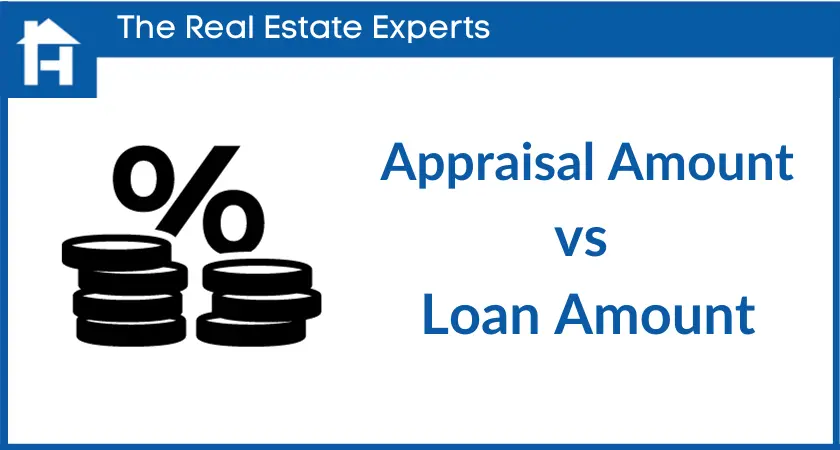According to NAR, 9% of contracts were terminated due to appraisal-related challenges. Home buying is a tedious process especially when calculating the right value of the house you buy.
During the appraisal process, you may come across two important terms: “appraisal amount” and “loan amount”. Understanding the difference between these two figures is crucial for home buyers.
What is the Appraisal Amount?
The appraisal amount refers to the value assigned to a property by a professional appraiser. The appraiser evaluates the property based on various factors. Some of which are location, size, condition, and comparable properties in the area.
However, the primary purpose of the appraisal amount is to ensure the property’s value and the loan amount requested by the buyer.
Role in the Home Buying Process
The appraisal amount plays a vital role in the home-buying process. However, lenders require an appraisal to protect their investment to ensure that property value justifies the loan amount.
It helps prevent borrowers from obtaining a loan that surpasses the property’s worth. By reducing the risk for both the buyer and the lender.
What is the Loan Amount?
The loan amount represents the total sum of money borrowed from a lender to purchase a property. This includes the home’s purchase price, without the buyer’s down payment.
Moreover, the lenders typically determine the loan amount based on the appraised value of the property. Buyer’s financial circumstances, such as income, credit history, and debt-to-income ratio.
Factors Affecting the Loan Amount
Several factors can influence the loan amount that lenders are willing to provide. Such as:
- Borrower’s credit score
- Employment history
- Debt obligations
- Type of loan program
Finally, lenders carefully assess these factors to determine the borrower’s ability to repay the loan.
Appraisal Amount Vs. Loan Amount
The lender uses appraisal to set your loan amount. Appraisal reflects the house’s true worth, preventing you from getting stuck with a loan that’s too big and protecting the lender from giving out too much money.
While a low appraisal may not preclude securing a loan entirely, the lender will base the final loan amount on the pre-determined loan-to-value (LTV) ratio established within the purchase contract.
What is the Loan-to-Value Ratio?
The LTV ratio, calculated by dividing your loan amount by the home’s value, reflects the lender’s risk. A lower LTV signifies a larger down payment and greater equity for you, which translates to potentially lower mortgage rates (often for ratios below 80%).
Final Word
Understanding the appraisal amount and loan amount is crucial for home buyers. The appraisal amount ensures that the property’s value aligns with the loan amount, protecting both the borrower and the lender.
Home loan options depend on a down payment, loan limits, and appraisal (which affects the loan-to-value ratio). Understanding these factors during home buying helps you secure the right loan for your finances. Talk to lenders and real estate agents for expert guidance.
Find Your New Home With Houzeo
With thousands of property listings, Houzeo.com is one of the biggest property listing sites in the US.
Find condos, townhouses, co-ops, and other types of homes for sale on Houzeo.
» NEED MORE CLARITY? Read these exclusive Houzeo reviews and learn why the platform is the best in America’s competitive housing market.
Frequently Asked Questions
Does the appraisal have to match the loan amount?
The appraisal does not have to match the loan amount exactly, but it is a crucial factor considered by lenders to determine the loan-to-value ratio and assess the risk associated with the loan.
Will a bank loan higher than an appraisal?
A bank typically does not loan higher than the appraised value of a property because they want to ensure that the loan is secured by sufficient collateral.
What happens if appraisal is lower than loan amount?
If the appraisal is lower than the loan amount, it can create challenges for the borrower. The lender may require the borrower to make up the difference in cash or adjust the loan terms. The borrower may need to negotiate with the seller or reconsider their purchase decision based on the appraisal results.
How much of the appraisal value will the bank loan?
The amount that a bank is willing to loan typically depends on the loan-to-value (LTV) ratio. Lenders often have maximum LTV ratios, commonly ranging from 80% to 95%, which means they may loan up to that percentage of the appraised value of the property.























